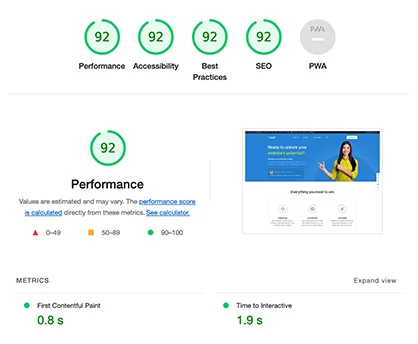Do you live or die by ROAS?
You might want to rethink that strategy.
In a recent episode of the Curry, Cheese, and Vegemite podcast, Usama explains why ROAS numbers are not the be-all, end-all when it comes to measuring campaign performance.
Watch the video clip here, or keep reading for a quick recap.
ROAS: A great concept, but inherently flawed
Usama starts by saying that while ROAS is a great concept, it will always be skewed by other numbers (such as customer lifetime value, or LTV). There will always be other touchpoints involved and people clicking on multiple platforms, so it becomes difficult to determine your actual ROAS.
So, he asks, if Google is showing a 2X ROAS, but clicks are coming from Google and other platforms such as Facebook (Meta), is it really a 2X ROAS?
Glen says no, because there are too many unknowns.
Are they new customers? Are they existing customers? If it is a blend of both, what is the ratio between the two? Because we all know that a lot of existing customers are going to come back and follow up through branded search or branded shopping.
Essentially, in-platform numbers are all lies.
This opinion comes from Usama, who explains that platforms such as Google, Facebook, Pinterest, and others are all designed to attribute things to themselves, in the sense that they are only measuring themselves.
So, for example, Google is not looking at what’s happening on Facebook, Facebook is not looking at what is happening on Pinterest, and so on. As a result, if someone goes from Google to Facebook to Pinterest and then converts, all three platforms are going to take credit.
It is never going to be a three-way split, because the platforms are not communicating with one another. “Let’s just say you’re running around a 1X [ROAS], and all three [platforms] counted conversions,” says Usama. “Realistically speaking, you only got a 33% ROAS because that’s split across three.”
So, adds Colby, while your ROAS may look great in Google (because Google is taking credit for everything), you might start pushing, but your signals could still be completely wrong.

The best advice: Use ROAS as a baseline.
“I don’t necessarily think it’s always a lie,” says Colby (referring to ROAS). “You should just use it as a baseline within that platform.”
That way, you can know that if performance is decreasing from a ROAS perspective in one platform, that is your baseline; that is how you know if something is going good or bad for that platform—but you should avoid applying that to the full picture and always, always, be looking at your sales.
Usama agrees, adding, “Revenue is the only truth in this world.” (Want to get better profitability metrics? Download our MER Tracking Sheet here.)
He says that his biggest red flag when doing an audit for a business is when he goes to their website and their return customer rate is ridiculously high, around 70–80%. Because if that is actually the case, that business is built on a foundation of primarily return customers, and those customers will eventually die off—leaving the business to crash and burn.
Or, he adds, “I compare new versus return customers, and if the amount of new customers I’m getting every month is not greater or significantly greater than the amount of return customers coming in every month? Red flag.” Because that means the return customers are exceeding the new customers coming in, which means you are losing business over time.
How do you approach ROAS for your business or your clients’ ad accounts? Do you agree with everything our strategists are saying? We’d love to hear your feedback!
Author
Pamela is the Senior Content Writer at Solutions 8. When she's not writing, you can find her hiking in the woods with her dogs. She is currently on a quest to visit every national park in the United States.
 Pamela Sapio
Pamela Sapio










